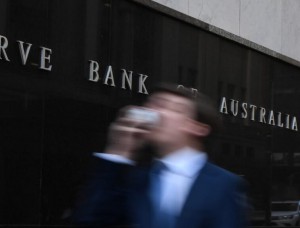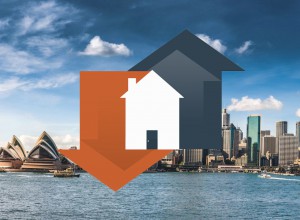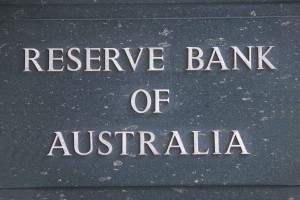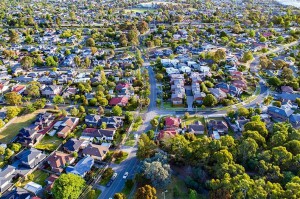There are more interesting articles, commentaries and analyst reports on the Web every week than anyone could read in a month.
Each Saturday morning I like to share some of the ones I’ve read during the week.
The weekend will be over before you know it, so enjoy some weekend reading.
ANZ pushes back its RBA rate hike call on housing market weakness
As the housing market continues to show uncertainly – ANZ have decided to hold off on an interest rate hike.
An article on Business Insider looks at the current state of play in the housing market and what can be expected ahead.
Australia’s housing market downturn will be larger than ANZ previously expected.
And while that’s unlikely to derail the Australian economy, it will see the Reserve Bank of Australia (RBA) hold off raising official interest rates until the middle of next year.
“Weakness in Australia’s housing market has persisted longer than we expected,” said ANZ’s Australian Economics Team, lead by David Plank, in a note released today.
“We have revised our forecasts and now expect to see peak-to-trough price declines of around 10% in Sydney and Melbourne, with smaller declines elsewhere.”
Here are the bank’s updated dwelling price forecasts by individual capital city for this year and next.
ANZ Bank
“Our updated forecasts show house prices falling until the end of 2018 and then stabilising in the first half of 2019,” ANZ says.
Rather than weakening demand or higher mortgage rates, ANZ says the latest downturn has, and will continued to be driven, by tighter home loan lending standards.
However, given the slowdown has not been caused by higher interest rates, it thinks its effect on the broader Australian economy will be less than what would normally be the vase.
“[This] reflects the fact that the source of house price weakness is a regulatory induced tightening in the supply of credit rather than one triggered by RBA rate hikes,” it says.
“We think this has a less pervasive impact on the economy than falling house prices brought about by higher interest rates would have.
Not least because much of the impact of tighter credit supply is centred on Sydney and Melbourne rather than being country wide.”
While falling house prices will weigh on household spending through a decreased wealth effect, ANZ thinks there will be offsetting factors that should keep GDP growth just above its potential level, seen by many as around 2.75% or slightly higher.
Potential growth refers to the level which leaves inflation broadly stable.
“We think for 2018 GDP growth will stay around the 3% level reached in Q1,” ANZ says.
“We expect similar growth in 2019, before a slowdown in government spending, investment and net exports sees growth drop to around 2.5% in 2020.”
As such, ANZ says growth of this magnitude will likely see Australia’s unemployment rate fall to 5% by the end of 2019, helping to gradually lift wage and inflationary pressures.
“The improvement in wage growth is expected to be gradual, with annual growth in the Wage Price Index lifting to 2.4%, 2.6% and 2.9% by the end of 2018, 2019 and 2020 respectively,” it says.
“The lift in wages helps the outlook for inflation, with core inflation lifting to an annual pace of 2.3% by the end of 2020.”
However, while such a scenario suggests the RBA may begin to lift official interest rates sooner than some expect, ANZ says the bank will likely be reluctant to increase borrowing costs at a time when home prices are still likely to be falling.
“We think the housing market’s path will influence the RBA’s policy deliberations,” it says.
“We think that our expectations — a decline in unemployment toward 5%, a gradual acceleration in wages and a lift in core inflation above 2% — support the case for a higher cash rate at some point. But the weaker outlook for housing will also matter, in our view.
“While the RBA doesn’t focus on house prices specifically, we doubt it will be comfortable tightening if house prices are still falling as that would add to the downside risks for the economy at a time when the inflation outlook doesn’t require an aggressive approach.”
As such, it now sees he RBA delivering its first rate hike since late 2010 in August next year, three months later than its previous forecast.
“We now think it more likely that the RBA will wait a little longer before tightening, not only to ensure that the housing market has stabilised but also to ensure that the unemployment rate gets closer to 5%,” it says.
“We have shifted the timing of the first rate hike to August 2019, with a second hike in November, [avoiding a] possible May election.”
ANZ says the increase in borrowing costs will likely lead to renewed and modest weakness in the housing market, an outcome it believes will see the RBA leave its official cash rate steady at 2% throughout 2020.
Read the full article here
March quarter resi prices (-0.7pc qtr, +2pc yr)
The March quarter results indicate a decline in property prices.
This Blog by Pete Wargent shows the statistics.
ABS reports modest price declines
The ABS released its residential property price indexes for the March 2017 quarter.
Although these figures are retrospective, they are always instructive, and reflected tighter lending conditions this quarter.
The total value of the dwelling stock was a nick lower at $6.9 billion – albeit well up from $4.4 trillion in 2011 – putting the mean price of residential dwellings at $687,700, and leaving housing market equity of around $5.1 trillion or so.
At the national level there was a quarterly decline in prices of 0.7 per cent, now leaving prices just 2 per cent higher than a year earlier.
The quarterly price decline was mainly accounted for by the most populous city, Sydney, with Melbourne also posting a moderate 0.6 per cent decline.
Read the full article here
Sydney and Melbourne house prices down again as economists warn of further falls
It looks like a downhill slope for property prices in Sydney & Melbourne – But what does this really mean for the market?
This article from Domain.com.au gives an insider look from Australia’s economists.
Sydney and Melbourne property prices have recorded their worst result since 2012, Bureau of Statistics data shows, with Sydney posting its first annual price fall in six years.
Economists now expect Sydney and Melbourne property prices to fall about 10 per cent from mid-2017 highs before starting to recover, with regulatory changes and tighter lending conditions continuing to reshape housing and credit markets.
National residential property prices fell 0.7 per cent in the March quarter, according to ABS data released on Tuesday, with Sydney recording a 1.2 per cent fall – its third consecutive negative quarter taking the city to its first annual price fall since March 2012.
Melbourne prices fell 0.6 per cent, which marks the first quarterly price fall since September 2012.
“Regulatory changes and tighter lending conditions have continued to affect investors, who are more active in the Sydney and Melbourne property markets,” ABS chief economist Bruce Hockman said on Tuesday.
“These cities have seen strong price growth over recent years, particularly in detached dwellings.”
(Source: ANZ Research)
Most capital cities saw declines in annual growth rates since September 2017, with the exception of Hobart, which has jumped 14.1 per cent in that time.
The mean price of Australian dwellings is now $687,700, according to the ABS data, and the total value of Australia’s 10 million residential dwellings decreased $22.5 billion to $6.9 trillion.
Peak-to-trough falls of 10 per cent expected
Noting a tightening of bank lending standards, Macquarie economists Justin Fabo and Ric Deverell expect the modest rate of decline in national dwelling prices to “continue for some time”.
The economists anticipate Sydney prices to fall about another 6 per cent, taking the fall since mid-2017 to about 10 per cent.
“We note that Australia has had six previous episodes of declining housing prices since 1980, with the peak-to-trough range of 2½ per cent to 8 per cent,” Mr Fabo and Mr Deverell wrote to clients on Tuesday.
“Nearly all previous corrections occurred following interest rate rises, a drag unlikely to be repeated anytime soon in this cycle.”
ANZ economists, meanwhile, materially downgraded their house price outlook on Tuesday – now also expecting peak-to-trough falls of around 10 per cent to Sydney and Melbourne.
(Source: ANZ Research)
“We believe the current cycle is being driven by tightening credit availability, rather than rising interest rates which have shaped previous cycles,” ANZ senior economists Daniel Gradwell and Joanne Masters wrote.
“Investors in particular are finding it harder to access credit, given ongoing policy changes across the lenders.”
Future credit tightening will be ‘modest’: RBA
“Regulators would be delighted with the orderly cooling of housing markets so far,” Mr Fabo and Mr Deverell wrote, noting Reserve Bank governor Philip Lowe’s view that a sustained period of flat house prices would be ideal.
The RBA board made mention of tightening credit conditions and the impact on property prices in the minutes of its June 5 board meeting, released on Tuesday, but said future tightening was expected to be “modest”.
Read the full article here
Top Performing Suburbs of Past 25 Years
While there’s always hot spots that come and go – its longevity that really measures the performance of a suburb.
So where are the top performing suburbs of the last 25 years?
In this article for Switzer, John McGrath looks at the results.
A joint study by Aussie Home Loans and CoreLogic has revealed the top 100 suburbs for capital growth across Australia over the past 25 years.
It makes for interesting reading because the past quarter century has been an extraordinary growth period in the history of Australia’s property market.
I was in the first few years of my real estate career back in the early 1990s and I’ve seen some dramatic changes since then that have all contributed to price growth.
There is certainly more awareness today around wealth generation, with more mums and dads using property as a vehicle for investment.
According to the study, investment has risen from 20% of mortgage demand in 1993 to an historic high of 55% in May 2015.
Lifestyle elements, such as proximity to cafes, restaurants and public transport, have become key drivers in where people to choose to live and there’s been a huge surge in apartment living.
In the 2000s, the internet changed everything by creating a massive buyer audience for every home listed for sale.
It encouraged buyers to look beyond their own neighbourhoods for better value and lifestyle, which raised competition for homes as ‘out of area buyers’ became more prevalent.
Significant economic reforms, massive population growth (especially migration) and a severe undersupply of housing in our major cities has also led to exceptional capital growth since 1993.
How exceptional, you may well ask?
Well, the Aussie/CoreLogic study shows national house prices have soared by 412% from a median of $111,500 in 1993 to $571,400 today.
That’s annualised growth of about 6.8%. Melbourne beat the national average at 8.1%, as did Sydney at 7.6%.
Median apartment values have risen 316% from $123,800 to $515,600 today, annualised at 5.9%.
How about this to demonstrate change.
Back in 1993, 98% of all houses sold nationwide were less than $400,000 in price and only 0.2% sold for more than $1 million.
Today it’s a vastly different story, with only 29% of houses selling for less than $400,000 and 16% selling for at least $1 million.
Chief Executive Officer of Aussie, James Symond, said: “Our report clearly shows that housing continues to grow as Australia’s largest asset class, with the typical home owner showing average dollar growth in their investment at $18,400 a year over the last quarter century.
Here are the first 50 suburbs.
National Top 50
Best performing suburbs
Median house price growth 1993-2018
If you’d like to see the full list, go to www.aussie.com.au/25years.
Read the full article here
The best way to get ahead in your career is by getting enough sleep
How many hours of sleep do you get?
An article on executivestyle.com.au looks at why it’s time to sleep your way to success.
The phrase, “You snooze, you lose” could have been invented with the business world in mind.
From Apple boss Tim Cook’s 5am starts to Barack Obama’s five-hours’-sleep-a-night boasts while in the Oval Office, burning the midnight oil and being the first at your desk has always been held in high regard in the workplace.
And it’s not just those in Silicon Valley and the White House (Obama’s replacement, President Trump, also prides himself on getting less than five hours a night) who aren’t sleeping enough.
In her new book, The Business of Sleep, Vicki Culpin, a clinical psychologist and expert in sleep and memory, reminds us that sleep, or rather the lack of, has been directly implicated in some of the biggest man-made disasters in recent history, from Chernobyl to the space shuttle Challenger explosion – a chilling warning, given her assertion that “never before have significant percentages of working adults been so sleep-deprived”.
At a more insidious level, rather than keeping you at the top of your game at work, studies show that even mild sleep deprivation hinders your concentration, people skills and, ultimately, your mental health.
There has been heightened business interest in sleep since António Horta Osório, chief executive of Lloyds bank, was signed off work with stress-related insomnia – he has said he did not sleep for five days as he battled to turn the bank around in 2011, leading him to check into the Priory with exhaustion.
Work-sleep balance
Some companies have already woken up to the importance of the sleeping habits of their staff. Google – frequently top of the “best places to work” rankings, thanks to staff perks such as on-site childcare and chefs – has installed sleep pods in its offices to encourage staff to nap.
Similar pods can be found springing up all over offices in Silicon Valley, New York and LA. Nike’s US headquarters has rooms designed for staff to sleep or meditate, and other companies, Proctor & Gamble included, are investing in lighting systems that regulate the sleep hormone melatonin.
And for staff at US insurance group Aetna, it literally pays to sleep.
To avoid sleep deprivation affecting performance, the company invites workers to sign up to a scheme that offers financial rewards for getting at least seven hours of sleep.
There are no Big Brother cameras making sure staff aren’t pocketing their sleep bonuses while getting late nights but, “we’re not worried, it’s an honour system.
We trust out staff,” says vice-president Kay Mooney.
Missing link to wellness
So why the sea change?
“There has been an exponential increase in firms asking for help in getting their staff to sleep better in the past two years,” says Guy Meadows, clinical director of The Sleep School, who runs sleep courses for professionals.
“Until recently, sleep was missing from work wellness programmes, which were more concerned with diet or exercise.
But sleep is the most important wellness pillar of all – and can even help with the other two.
After all, studies show that when we get enough sleep we make better food choices and are more likely to have the willpower to exercise.
“We also know that sleep is the starting block of all cognitive function, from memory to concentration.
But I don’t believe this new focus on sleep is solely driven by a desire to boost profits and to get more out of their employees.
Rather, I believe it’s part of a larger focus on good positive mental health within the workplace.
So many organisations now have a mental health agenda and they know there are rising levels of stress, depression and anxiety within the workplace.
And these things are inextricably linked to sleep.”
Winners are snoozers
Accountancy giant Deloitte now offers staff relaxation rooms and the chance to go on sleep training courses, led by Dr John Briffa, author of A Great Day at the Office.
“The ‘sleep is for wimps’ mantra has gone.
In its place is a culture of senior staff significantly more aware of the benefits of sleep,” he says.
“The pressures of corporate life ramps up year on year, but firms like Deloitte realise that its people are its asset.
Many companies today don’t make actual products to sell.
So their staff and the service they provide are their ‘product’ and they’re realising they need to support them to become well, happy and rested.
And data suggests focusing on sleep is a worthwhile endeavour because it’s the starting block of good health, and the management around it is free and fairly simple.
Sleep was once seen as a luxury item, the bottom of the priority list and the thing that could be squeezed out to fit more work in.
But rather than sleep not being very productive, it is in fact key to productivity.”
Read the full article here
Weekend videos: What Is Your Mental Age? (Quick Test)
from Property UpdateProperty Update https://propertyupdate.com.au/weekend-reads-must-read-articles-last-week-21/




















No comments:
Post a Comment